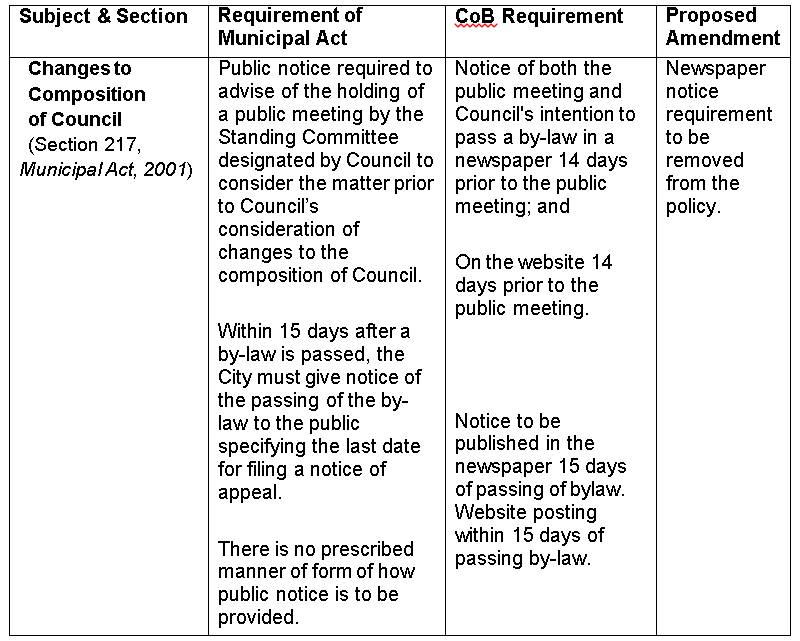 By Pepper Parr
By Pepper Parr
January 3rd, 2024
BURLINGTON, ON
There wasn’t much in the way of notice.
The last print edition of the Burlington Post was printed on September 15th. The public got the news a day before. The Post is one of 70 local newspapers that are part of Metroland.
What does all this mean to Burlington?
 John Best, a colleague who publishes the Bay Observer put it very well when he said: “Locally, the biggest danger is in a community like Burlington, where on a good day there would have been one or two people at the media table at City Council or Board of Education meetings—now maybe none.
John Best, a colleague who publishes the Bay Observer put it very well when he said: “Locally, the biggest danger is in a community like Burlington, where on a good day there would have been one or two people at the media table at City Council or Board of Education meetings—now maybe none.
“Burlington Council with only seven members is already more or less devoid of any real debate, its seven members apparently in broad agreement on almost everything, or if they don’t, they hash it out somewhere else. The small size of the council is a factor that makes it easier to keep members in line, and the lack of media scrutiny outside of online disruptors like the Burlington Gazette have led to a country-club atmosphere. This is a council that put its heads together in 2022 and decided to keep the $100 million cost of the Bateman Community Centre Project a secret until after they were all safely re-elected. Media scrutiny has diminished in Burlington right at the time when a whole lot more is needed.”
Loosing a print media is significant and a clear understanding of just what happened to the Post and the other Metroland newspapers matters
Nordstar Capital LP owns the Toronto Star which is struggling. The Toronto Star owned Metroland. “Metroland was losing money; working furiously to find a solution but realized they were at a point where they simply couldn’t pay their expenses. Torstar chief executive officer Neil Oliver said at a creditor meeting held in November. That “Metroland is not out of the woods with the proposal, we believe it gives the remaining team and properties the opportunity to be viable for the long term.”
 Metroland cited the challenging economic environment for newspapers – particularly the steep decline in print advertising revenue – for its financial troubles. The company’s papers have faced a “sizable loss of readership” and revenue has fallen more than 10 per cent each year for the past three years, according to Grant Thornton, an accounting firm.
Metroland cited the challenging economic environment for newspapers – particularly the steep decline in print advertising revenue – for its financial troubles. The company’s papers have faced a “sizable loss of readership” and revenue has fallen more than 10 per cent each year for the past three years, according to Grant Thornton, an accounting firm.
Metroland said in mid-September that it planned to make a proposal pursuant to Canada’s Bankruptcy and Insolvency Act, and it followed up in mid-October with the plan.
In his report to creditors, Grant Thornton trustee Jonathan Krieger recommends a “Yes” for the vote scheduled for Tuesday, which would give unsecured creditors 13 cents on the dollar for their claims. Key to this analysis, of course, is just how much Metroland’s assets are worth.

The news business has changed.
Among those creditors were the news reporters who no longer have jobs.
“There was no discernible enterprise value for a business that has lost $10-million in the past year alone” adding that Metroland “held numerous M&A discussions with prospective buyers over the past year and could not procure a successful cash bid for any of the newspapers,” he said. The $20-million in equity stakes are undisclosed because they are “subject to confidentiality provisions.”
However, unlike other corporate reorganizations where the stockholders get wiped out in order to pay creditors, Torstar will emerge from this process maintaining its 100-per-cent ownership of Metroland, with all of its assets.
It would not be incorrect to say that there are some shady issues surrounding how the Star managed to dump the Metroland employees, offer them pennies on the dollar and try to get some federal money for them.
If the creditors had said No to the proposal that was before them they would have been given five cents on the dollar, not 13 but Metroland would have been bankrupt – dead. But because the offer was accepted by the creditors Metroland is in receivership which means it is still operating.
The plan was recommended by an independent trustee employed by Grant Thornton, charged with operating in the interest of all the stakeholders in the matter. Some observers felt the trustee’s report was thin on details to make creditors wonder whether they have enough information to make an informed decision.
Creditors of insolvent newspaper chain Metroland Media Group Ltd. voted to approve a proposal on Monday that would see the company pay pennies on the dollar to restructure its debt and avoid bankruptcy.
Metroland sought creditor protection on Sept. 15 with liabilities totalling more than $78-million. The publisher laid off 605 employees, nearly two-thirds of its work force, without paying severance or termination pay, while other employees who took voluntary buyout packages earlier this year had their salary continuance payments cut off.
A restructuring proposal like the one filed by Metroland allows a troubled company to address its debt and avoid a bankruptcy filing. Had creditors voted against Metroland’s proposal, the company would have been deemed bankrupt under the Bankruptcy and Insolvency Act.
Accepting the proposal meant that Metroland was kept alive while the 600+ employees looked at empty wallets.
The amount to be paid to creditors is not finalized. Metroland intends to apply to the federal government’s Wage Earner Protection Program, (WEPP) which offers payment to former employees stemming from a bankruptcy or receivership.
If WEPP is approved, former employees will receive 17 cents on the dollar for the balance of their claims, in addition to other payments. Other unsecured creditors would receive the same repayment percentage.
Lawyers for Metroland scheduled a court date to seek WEPP in late November, but the Department of Justice indicated it would oppose the motion. Metroland is still an operating company, and not in bankruptcy. The company then arranged to have a receiver appointed over its inventory, which could aid in its WEPP application.
“We believe that the likelihood of WEPP being eligible for this company is likely enhanced by virtue of that receivership,” Grant Thornton partner Jonathan Krieger said at the creditor meeting on Monday.
What does this mean to the communities across the province that relied on their local newspaper for news on current events..
Burlington had to decide recently where it would place notices they are required to publish under both the Municipal Act and the Planning Act.
Burlington is currently served by four online newspapers. The Gazette, which was the first online paper to be recognized by what was then the Ontario Press Council in 2010. The Post has become an online newspaper, the Bay Observer serves the Burlington market as does Burlington Today, a recent addition to the Burlington market.
The ceasing of the print publication of The Burlington Post has multi-faceted impacts on how the City provides public notice.
Whereas the Municipal Act, 2001 allows municipalities for more flexibility, other legislation is very specific as to the manner in which notice is given.
Staff have undertaken a review of the City’s Public Notice Policy and are seeking to make amendments where publication in a newspaper is not a prescribed requirement under the Municipal Act, 2001. Amendments to the Public Notice Policy are based on the findings summarized below:

Based on the above definition and the definition included in the policy, The Hamilton Spectator has been determined as the paper of record for the City of Burlington in the absence of a local newspaper such as The Burlington Post. The Hamilton Spectator is a daily newspaper with 4,673 subscribers in Burlington compared to The Toronto Star at 1,152 subscribers.
The Public Notice Policy provides minimum notice standards and encourages the public notice authors to consult with Corporate Communications & Engagement staff to ensure all appropriate tactics are used when providing notice to the public. The City has a dedicated News and Notices section with 1,065 current subscribers, where all City notices are posted in one centralized location.
By removing the requirement for printed media notices, where not statutorily required, the policy provides more flexibility while ensuring legislative requirements are met. In instances where newspaper notices are required, such as the Publication of Financial Statements, election notices, or notices required under other legislation including the Planning Act, the City will use The Hamilton Spectator based on the general circulation requirement, in addition to notices posted to the City’s website and digital publications. Many other municipalities have moved towards the publication of notices on their websites either exclusively or with a hybrid approach given the changing media landscape.
What this really amounts to is the city walking away from the concept that they really want to keep the public informed. Transparency and accountability took another punch in the head.
Financial Matters:
Costs will be incurred depending on the type and frequency of notice. If a legislative requirement to post notice in print media exists, the associated cost is unavoidable. Below is a cost comparison for comparable ads in The Hamilton Spectator versus The Burlington Post. These are the preferred rates for the City as provided by Communications staff. This price list is not extensive and meant to show cost differences.
| Approximate size of ad | Burlington Post | The Hamilton Spectator |
| 5” x 5” | $372.50 | $895 |
| 10” x 5” | $696 | $1,650 |
Whereas the cost to post notices in the Hamilton Spectator are nearly triple than The Burlington Post, the frequency of the required notices under the Municipal Act, 2001 can be expected to decrease. In some instances of notices required under the Planning Act, those costs are forwarded onto the applicants.
Total Financial Impact
On average, there have been 250 ads placed throughout the year, but that number does fluctuate. In 2022 the print costs totalled $131,103 with the Burlington Post. Staff will monitor the increased advertising costs closely in 2024 and mitigate the financial impact where possible. Should an increase to the City’s advertising budget be required, staff will identify the need as part of the 2025 Financial needs and Multi-year Forecast for the Mayor to consider for inclusion in the 2025 Proposed Budget.
















After 20 plus years of subscribing to The Spectatior I cancelled my subscription. I did this after failed attempts to have them add a Burlington specific page. Some of us will remember the Spec office on Brant. The failure of newspapers is in part self inflicted. Burlington is in dire need of the transparency that comes with investigative reporting. And yes the ones that are gone were unofficial PR outlets. Thank you Burlington Gazette for hanging in there.
‘Why did we fail?’ Is not the question any business should ask themselves, ‘Why are we failing?’ Is the correct question.
Jeff Bezos warned his employees after the failure of ‘Sears’ not to get comfortable in Amazons success.
Government subsidies and favours just gets us more of the same
I happen to skim ‘The Bay Observer’ daily, I never even look at the ‘Spectator’ I have mentioned in the past my reads are worldwide. Today for example I had an eyebrow raising moment when a story from the ‘Toronto Star’ appeared in one of my feeds (Headline) ‘Heads of 17 Canadian environmental charities collecting major compensation packages’ I read the entire story, very interesting and worth keeping up with.
Better than the headline that the ‘unvaccinated should die’
Shocking to see that in Burlington, which must have at least 60,000 households, there are fewer than 5,000 readers of daily news/opinion. Presumably unfiltered social media garbage fills this vacuum. No wonder voter turnouts are so low.
“Burlington Council with only seven members is already more or less devoid of any real debate, its seven members apparently in broad agreement on almost everything, or if they don’t, they hash it out somewhere else. The small size of the council is a factor that makes it easier to keep members in line, and the lack of media scrutiny outside of online disruptors like the Burlington Gazette have led to a country-club atmosphere. This is a council that put its heads together in 2022 and decided to keep the $100 million cost of the Bateman Community Centre Project a secret until after they were all safely re-elected. Media scrutiny has diminished in Burlington right at the time when a whole lot more is needed.”
Very well said by John Best. We need more media saying things like this! Frankly, in my opinion, the Burlington Post and Metroland didn’t and don’t do any more than regurgitate city and council statements and posts. I can’t recall ever reading anything questioning what the city has to say. Just like Burlington Today, they seem to practically be a PR source for COB. Has Metroland, for example, asked the Mayor directly about the critical injuries to Bateman workers removing asbestos? Asked why she’s been silent on the whole thing while touting transparency? Have they even written that the cost is now $100 Million!!? Have they ever questioned anything she’s said?